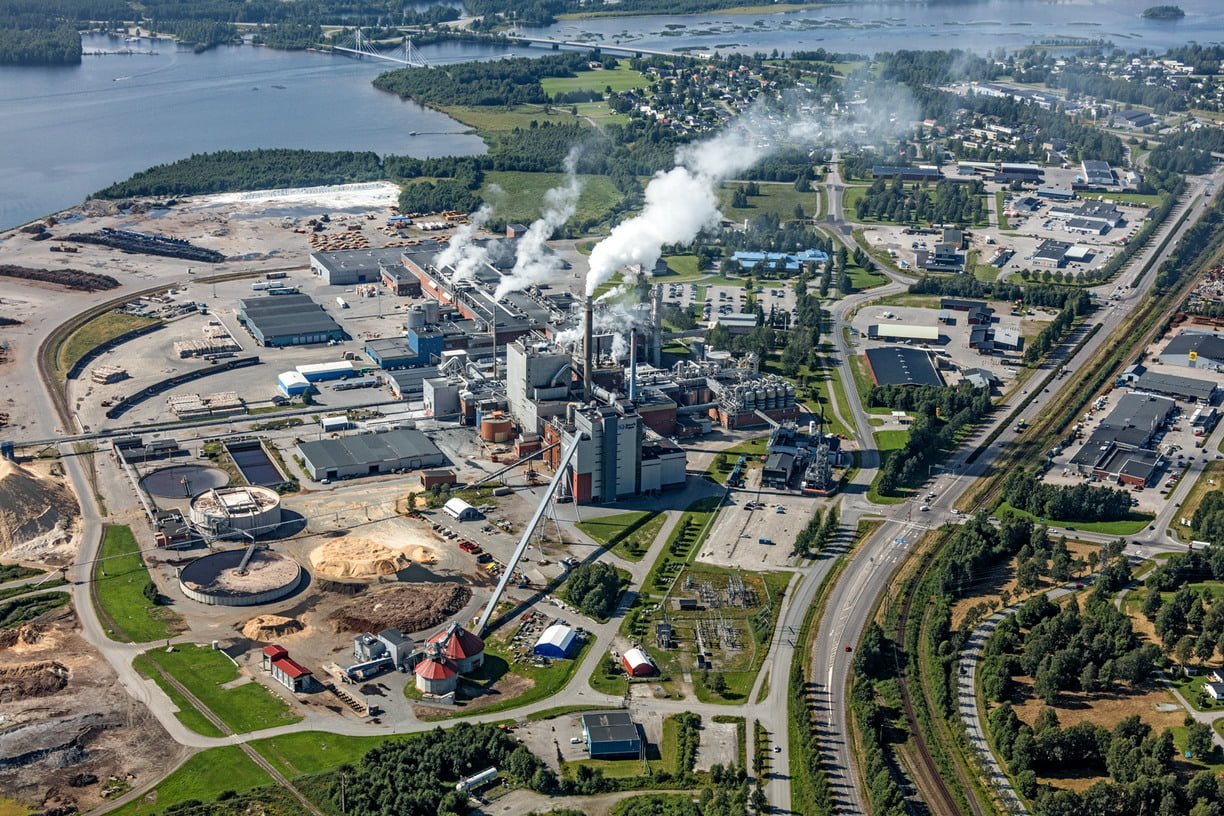The Power of Pulp: Exploring the Exciting New Applications of Sawdust and Wood Chip Fuel
Sawdust and wood chips are often seen as waste products in the timber industry, but they actually have a surprising potential as fuel sources. These byproducts of wood processing can be transformed into pulp fuel, which can be used for a variety of purposes, including generating electricity, heating homes and businesses, and fueling manufacturing and processing operations.
Pulp fuel is made by compressing sawdust and wood chips into dense pellets or briquettes. These pellets can then be burned in specialized boilers and furnaces to produce heat or converted into electricity through the process of combustion. The use of pulp fuel offers several benefits, including its renewable and sustainable nature, as well as its cost-effectiveness compared to traditional fossil fuels.
The Advantages of Pulp Fuel: Renewable, Sustainable, and Cost-Effective
One of the key advantages of pulp fuel is its renewable and sustainable nature. Unlike fossil fuels such as coal, oil, and natural gas, which are finite resources that will eventually run out, sawdust and wood chips are abundant and can be continuously replenished through sustainable forestry practices. This makes pulp fuel a more environmentally friendly alternative to traditional fossil fuels.
In addition to being renewable, pulp fuel is also cost-effective. The production of pulp fuel is relatively inexpensive compared to the extraction and processing of fossil fuels. Furthermore, the use of pulp fuel can help reduce energy costs for businesses and homeowners. For example, using wood chip boilers or furnaces for heating can be more cost-effective in the long run compared to using oil or gas boilers.
From Waste to Energy: How Sawdust and Wood Chips are Being Transformed
The process of transforming sawdust and wood chips into pulp fuel involves several steps. First, the raw material is collected from timber mills or other wood processing facilities. The sawdust and wood chips are then dried to reduce their moisture content, which improves the efficiency of the combustion process.
Once the raw material is dry, it is compressed into dense pellets or briquettes using specialized machinery. The compression process increases the energy density of the fuel, making it easier to transport and store. The pellets or briquettes can then be used as fuel in boilers, furnaces, or power plants.
There are different types of pulp fuel, depending on the size and shape of the pellets or briquettes. For example, wood pellets are small cylindrical pellets that are commonly used for residential heating. Wood briquettes, on the other hand, are larger and denser and are often used for industrial applications or power generation.
Pulp Power: Generating Electricity with Biomass Fuel
One of the main uses of pulp fuel is for generating electricity. Biomass power plants use pulp fuel to produce steam, which drives a turbine connected to a generator. This process is similar to how traditional power plants generate electricity using fossil fuels, but with the added benefit of using a renewable and sustainable fuel source.
The use of pulp fuel for electricity generation offers several benefits. First, it helps reduce greenhouse gas emissions compared to fossil fuel-based power generation. When wood pellets or briquettes are burned, they release carbon dioxide into the atmosphere. However, this carbon dioxide is offset by the carbon dioxide absorbed by trees during their growth, making biomass power plants carbon neutral.
Furthermore, biomass power plants can help diversify the energy mix and reduce dependence on fossil fuels. By utilizing locally available sawdust and wood chips as fuel, countries can reduce their reliance on imported oil or gas. This can enhance energy security and contribute to a more sustainable and resilient energy system.
Heating with Pulp: Wood Chip Boilers and Furnaces for Homes and Businesses
Another important application of pulp fuel is for heating homes and businesses. Wood chip boilers and furnaces are commonly used in residential, commercial, and industrial settings to provide space heating and hot water. These systems can be used as a primary heat source or as a backup to traditional heating systems.
Wood chip boilers and furnaces work by burning wood chips in a combustion chamber, which heats water or air that is then distributed throughout the building. The use of pulp fuel for heating offers several advantages. First, it can help reduce heating costs, especially in areas where wood chips are readily available and inexpensive. Additionally, wood chip boilers and furnaces can be integrated with existing heating systems, making it easier to transition to a more sustainable fuel source.
Pulp for Industry: Sawdust and Wood Chips as Fuel for Manufacturing and Processing
Pulp fuel is not only suitable for residential and commercial heating but also for industrial applications. Many manufacturing and processing operations require high temperatures for various processes, such as drying, curing, or melting. Traditionally, these industries have relied on fossil fuels such as natural gas or oil to meet their energy needs. However, the use of pulp fuel can offer a more sustainable and cost-effective alternative.
By using sawdust and wood chips as fuel, industries can reduce their carbon footprint and dependence on fossil fuels. Pulp fuel can be used in specialized boilers or furnaces to provide the high temperatures required for industrial processes. In addition to reducing greenhouse gas emissions, the use of pulp fuel can also help companies save on energy costs, especially in regions where wood waste is abundant and inexpensive.
The Future of Pulp: Innovations in Biomass Technology and Research
The field of pulp fuel technology is constantly evolving, with ongoing research and development efforts focused on improving efficiency, reducing emissions, and expanding the range of applications. One area of innovation is the development of advanced combustion technologies that can further improve the efficiency of biomass power plants.
For example, researchers are exploring the use of gasification and pyrolysis technologies, which involve heating the biomass in the absence of oxygen to produce a gas or liquid fuel. These processes can potentially increase the energy yield and reduce emissions compared to traditional combustion.
Another area of research is the development of new feedstocks for pulp fuel production. While sawdust and wood chips are currently the most commonly used feedstocks, researchers are investigating the use of agricultural residues, such as straw or corn stover, as well as dedicated energy crops, such as switchgrass or miscanthus. These alternative feedstocks can help diversify the biomass supply chain and reduce competition with food production.
Challenges and Opportunities: Overcoming Obstacles to Pulp Fuel Adoption
Despite its many advantages, there are still challenges to the widespread adoption of pulp fuel. One of the main challenges is the availability and cost of feedstock. While sawdust and wood chips are abundant in some regions, they may be scarce or expensive in others. This can limit the feasibility of using pulp fuel for heating or power generation.
Another challenge is the need for specialized equipment and infrastructure. Wood chip boilers and furnaces require specific design considerations and may require modifications to existing heating systems. Similarly, biomass power plants require dedicated facilities for fuel storage, handling, and combustion. The upfront costs associated with these investments can be a barrier to adoption, especially for small businesses or homeowners.
However, there are also opportunities for overcoming these challenges. For example, governments can provide incentives or subsidies to promote the use of pulp fuel, such as tax credits or grants for installing wood chip boilers or furnaces. Additionally, research and development efforts can focus on improving the efficiency and cost-effectiveness of pulp fuel technologies, as well as developing new feedstocks that are more readily available and affordable.
Environmental Benefits of Pulp Fuel: Reducing Carbon Emissions and Waste
One of the main environmental benefits of using pulp fuel is its potential to reduce carbon emissions. When wood pellets or briquettes are burned, they release carbon dioxide into the atmosphere. However, this carbon dioxide is offset by the carbon dioxide absorbed by trees during their growth, making pulp fuel a carbon-neutral fuel source.
Furthermore, the use of pulp fuel can help reduce waste and promote a circular economy. Sawdust and wood chips that would otherwise be discarded as waste can be transformed into a valuable fuel source. This not only reduces the environmental impact of waste disposal but also helps conserve natural resources by utilizing a byproduct of the timber industry.
Pulp Fuel Around the World: Global Trends and Regional Applications
The adoption of pulp fuel varies around the world, with some countries leading the way in biomass energy production and others still in the early stages of development. In Europe, for example, there has been significant investment in biomass power plants and district heating systems fueled by wood pellets or chips. Countries such as Sweden, Finland, and Austria have made significant progress in transitioning to a more sustainable energy system.
In North America, the use of pulp fuel for heating and power generation is also gaining traction. In Canada, for example, wood pellet production has increased significantly in recent years, driven by demand from domestic and international markets. In the United States, biomass power plants are being developed to help diversify the energy mix and reduce dependence on fossil fuels.
In developing countries, pulp fuel can offer an affordable and sustainable energy solution for rural communities. For example, in parts of Africa where access to electricity is limited, small-scale biomass power plants can provide reliable and clean energy for lighting, cooking, and other basic needs. Additionally, the use of pulp fuel for heating can help reduce reliance on traditional biomass fuels such as firewood or charcoal, which can contribute to deforestation and indoor air pollution.
Embracing the Potential of Pulp for a Cleaner, Greener Future
The use of sawdust and wood chips as fuel has a surprising potential to contribute to a cleaner, greener future. Pulp fuel offers several advantages, including its renewable and sustainable nature, its cost-effectiveness compared to traditional fossil fuels, and its versatility for various applications such as electricity generation, heating, and industrial processes.
While there are challenges to the widespread adoption of pulp fuel, there are also opportunities for overcoming these challenges through government support, research and development efforts, and innovative business models. By embracing the potential of pulp fuel, we can reduce carbon emissions, promote a circular economy, and create a more sustainable and resilient energy system. It is time to recognize the value of sawdust and wood chips as a valuable resource rather than waste and harness their potential for a cleaner, greener future.
Originally posted 2024-02-13 15:00:21.

